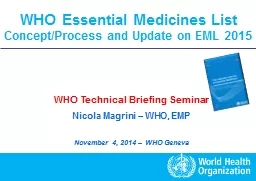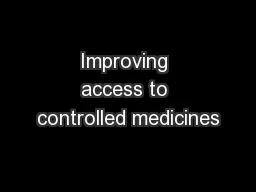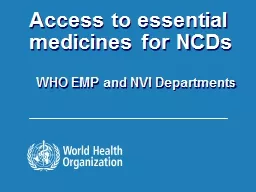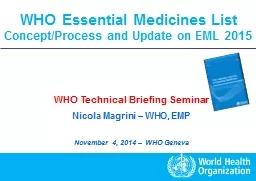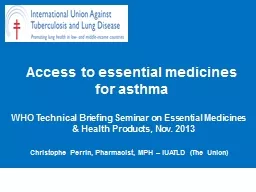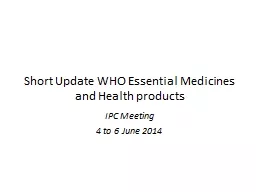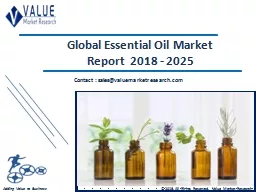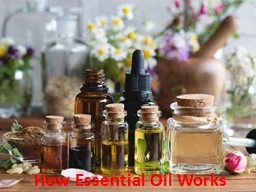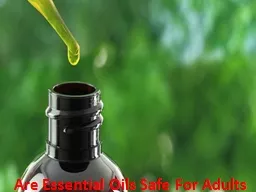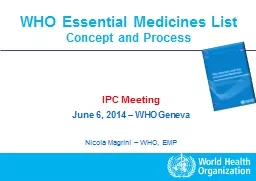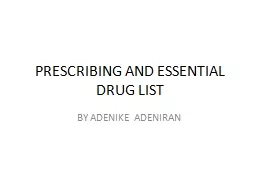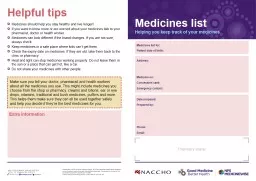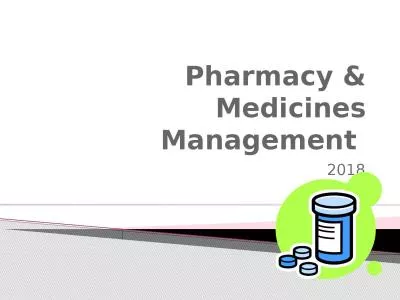PPT-WHO Essential Medicines List
Author : lois-ondreau | Published Date : 2017-10-19
ConceptProcess and Update on EML 2015 WHO Technical Briefing Seminar Nicola Magrini WHO EMP November 4 2014 WHO Geneva Essential Medicines Guiding principle A
Presentation Embed Code
Download Presentation
Download Presentation The PPT/PDF document "WHO Essential Medicines List" is the property of its rightful owner. Permission is granted to download and print the materials on this website for personal, non-commercial use only, and to display it on your personal computer provided you do not modify the materials and that you retain all copyright notices contained in the materials. By downloading content from our website, you accept the terms of this agreement.
WHO Essential Medicines List: Transcript
Download Rules Of Document
"WHO Essential Medicines List"The content belongs to its owner. You may download and print it for personal use, without modification, and keep all copyright notices. By downloading, you agree to these terms.
Related Documents

